Electric Horse Hoof Trimmers: A Comprehensive Guide
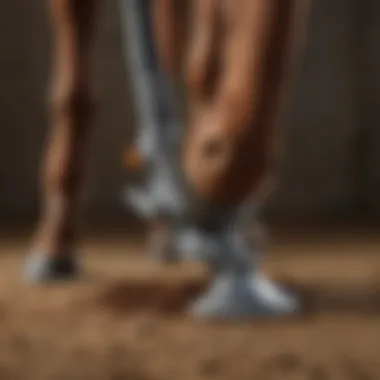
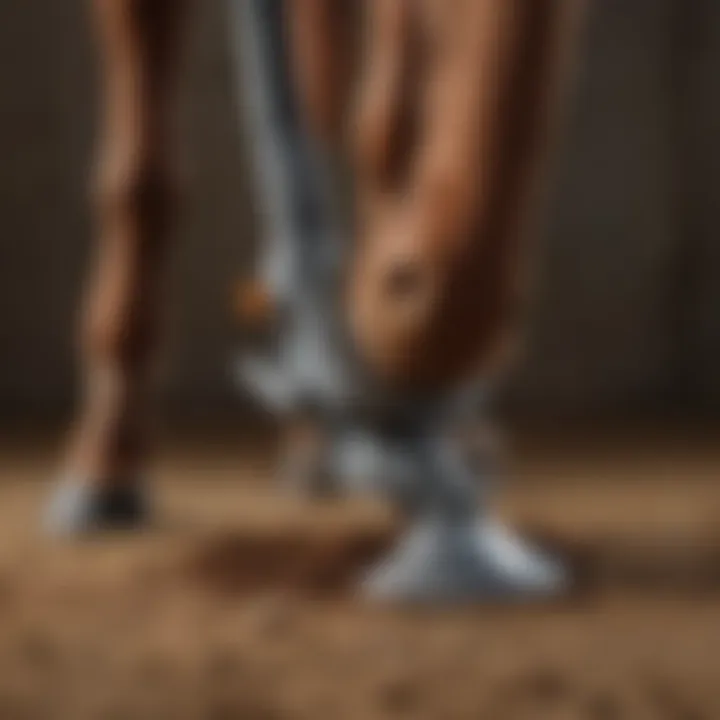
Intro
Electric horse hoof trimmers have revolutionized equine care. Taking the manual tools that many farriers use for centuries, electric versions have emerged as key instruments in modern hoof maintenance. This transition benefits both the horse's health and the efficiency of the trimming process. A considerable number of equestrians, novice and expert alike, are now adopting these tools to streamline hoof care.
Hoof trimming is a critical aspect of horse health. Proper hoof care prevents various medical issues, such as lameness and infections, often rooted in neglected hoof maintenance. With the integration of electric trimmers, the task becomes less labor-intensive and more precise.
As these devices continue to evolve, this guide will outline the core concepts behind electric hoof trimmers. It will cover the definition and importance of these tools, as well as provide a historical context to their development.
Topic Overview
Definition and Importance
Electric horse hoof trimmers are designed for efficient and safe hoof care. They provide a faster alternative to traditional manual methods. The primary function includes trimming, shaping, and maintaining horse hooves. Their importance cannot be overstated; regular and proper hoof care ensures the horse remains healthy and able to perform. Furthermore, it reduces the risk of serious medical complications.
Brief History and Evolution
Historically, various manual tools like hand knives and rasps dominated the hoof care industry for centuries. However, the introduction of electric trimmers revolutionized this field. The development began in the late 20th century. Since then, the technology has improved significantly. Early models tended to overheat, were heavy, and sometimes difficult to handle. Today, advancements have created lighter tools with enhanced ergonomics. They have powerful motors that deliver precision and speed, thus optimizing the trimming process.
Electric hoof trimmers have also become more accessible. Many brands now produce models that cater to both professional farriers and casual horse owners. These advancements have made electric hoof trimming an invaluable tool in the landscape of equine management.
Prelude to Electric Horse Hoof Trimmers
In the realm of equine care, hoof maintenance holds significant importance. The health of a horse largely depends on the condition of its hooves. This is where electric horse hoof trimmers come into play. These tools are designed not just for convenience, but also to enhance the quality of hoof care provided to horses.
Electric hoof trimmers offer various advantages. They simplify the task of trimming, making the process quicker and more efficient. This is especially beneficial when caring for multiple horses in a stable. Traditional methods may demand considerable physical effort and time. However, electric options streamline this, allowing for a more systematic approach to hoof care.
Electric trimmers are also designed for precision. Unlike manual tools, they can offer more consistent results, which can help in preventing hoof-related health issues. This precision ensures that the needs of each horse can be met adequately, tailored to their specific hoof structures.
Many users have noted a significant reduction in fatigue when using electric trimmers. The ergonomic designs of many models allow users to maintain a comfortable grip. This leads to a more controlled experience, minimizing the chances of accidents during trimming.
Moreover, safety has become a priority in equine care. Electric hoof trimmers come equipped with various safety features that protect both the horse and the handler. Users can feel secure knowing that these trimmers have been developed with the latest technology in mind to ensure optimal safety.
In summary, electric horse hoof trimmers represent a significant advancement in hoof care. They cater to the needs of both horses and their caretakers. Understanding the intricate details of these tools can help practitioners improve equine health effectively, promoting longer lifespans and better performance in their horses.
Understanding the Basics of Horse Hoof Care
Horse hoof care is a fundamental aspect of equine management that demands attention from every horse owner and caretaker. Hoof health directly affects a horse's overall well-being, performance, and comfort. While many may perceive hoof care as just trimming, it encompasses much more than that. This section unpacks critical elements that compose hoof care and highlights its significance in promoting long-term health.
Importance of Regular Hoof Care
Regular hoof care is vital for multiple reasons. Firstly, it ensures that the hooves maintain their shape and structure. Horses' hooves grow continuously, similar to hair or nails. Without appropriate trimming, they can overgrow, which can lead to discomfort and even injuries. Overgrown hooves can impede a horse's movement, causing lameness and escalating to more severe health issues.
Secondly, regular care allows for the early detection of abnormalities. Observing the hooves frequently can reveal signs of problems such as cracks, thrush, or other infections. Prompt attention can prevent severe issues that may require surgical intervention or long recovery periods. In addition, regular care enhances the horse's performance, especially in competitive settings where every aspect of health can impact agility and speed.
Traditional vs. Electric Trimming Methods
When it comes to trimming, horse owners have two primary methods: traditional and electric. Traditional methods usually involve manual tools like hoof knives, rasps, and nippers. These tools require skill and experience. The trimming process can be time-consuming, and the physical labor can contribute to fatigue for the caregiver. The precision of this method relies heavily on the user's ability and experience.
On the other hand, electric hoof trimmers are gaining popularity due to their efficiency and ease of use. They offer powerful and consistent performance, significantly reducing the time needed for each trim. Moreover, electric models are designed to maintain precision, allowing for a more even finish. This technology helps alleviate some physical strain on the operator while ensuring the horse receives an accurate trim.
In summary, understanding basic hoof care is essential for anyone involved in equine management. Regular care not only improves a horse’s comfort but also allows for the early detection of potential problems. The choice between traditional and electric trimming methods also greatly influences the efficiency and outcome, making it a crucial discussion point for both novice and experienced handlers.
Advantages of Electric Hoof Trimmers
Electric hoof trimmers have become increasingly popular among horse owners and equine professionals. The advantages they offer not only make hoof care more efficient but also improve the overall well-being of horses. This section will examine some key benefits that come with using electric trimmers, focusing on efficiency, precision, and the reduction of worker fatigue, all of which contribute to a more effective approach to hoof care.
Increased Efficiency and Time Saving
One of the most significant advantages of electric hoof trimmers is their ability to enhance efficiency. Traditional hoof trimming can be a time-consuming process, often requiring significant physical effort and skill. Electric trimmers, on the other hand, cut down the time needed for each session. This is crucial for professionals who manage multiple horses or for those who have limited time for each grooming session.
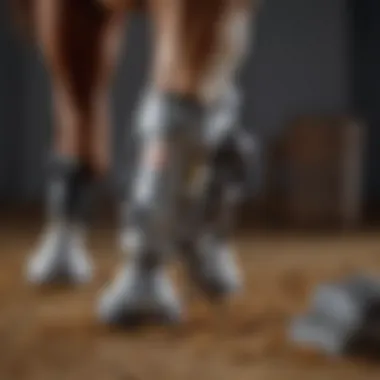
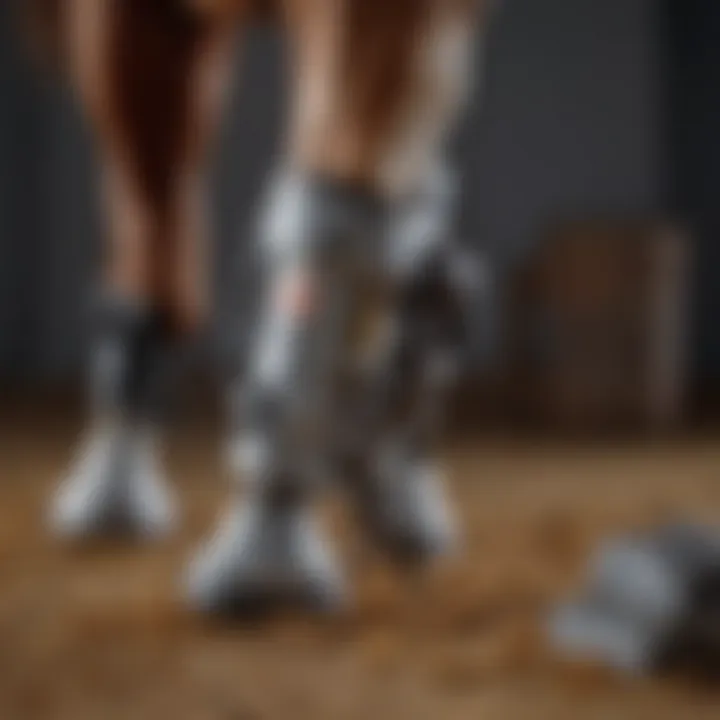
"Many horse owners find that electric trimmers can reduce trimming time by half, allowing for quicker service without sacrificing quality."
In a busy stable, such speed can mean attending to more horses in the same timeframe. For those who work in competitive environments, like racing or shows, every minute matters. The time-saving aspect is not just about finishing faster; it directly impacts the horse's comfort by reducing the duration they are restrained or handled.
Enhanced Precision in Hoof Trimming
Precision is essential in hoof care. Electric trimmers are designed to provide a consistent cut, which is vital for maintaining the horse's hoof health. Traditional methods can sometimes lead to uneven surfaces, which might cause pain or other issues over time. With the use of electric hoof trimmers, equestrians can achieve more uniform trim results. This precision ensures that the hoof remains balanced, reducing the risk of injury or discomfort.
The availability of different blade types further accentuates this benefit. Operators can choose blades suited specifically for their needs, whether they are trimming, shaping, or performing maintenance work. Such adaptability allows for a tailored approach for each horse, ensuring optimal care.
Reduction of Worker Fatigue
Hoof trimming can be labor-intensive and physically demanding. Electric hoof trimmers are significantly lighter and easier to maneuver than traditional tools, which helps alleviate physical strain on the operator. This reduction in fatigue is beneficial for professionals who perform these tasks frequently. Less fatigue leads to better focus and finer attention to detail.
Being less fatigued can help workers provide a safer environment for both themselves and the horses. When care providers are fresh and alert, the quality of care improves, leading to better outcomes in hoof health.
Types of Electric Horse Hoof Trimmers
Understanding the different types of electric horse hoof trimmers is crucial for both novice and experienced equestrians. Choosing the right trimmer can enhance efficiency and make the hoof care process smoother. The market offers a variety of models that cater to diverse needs, ranging from professional stables to personal use by horse owners.
When selecting an electric hoof trimmer, consider factors such as purpose, frequency of use, and the specific requirements of the horses being trimmed. These factors significantly influence not just performance but also the overall user experience. Choosing the right trimmer type ensures comprehensive care, leading to better hoof health and happier horses.
Corded vs. Cordless Models
Corded electric hoof trimmers provide a consistent power source, making them well-suited for extended use without the need for recharges. They are generally more powerful and can handle tougher hoof materials. However, they come with limitations such as the need for a reliable power source and the potential for tripping hazards due to cords.
On the other hand, cordless models offer convenience and mobility. They are easier to maneuver, especially in tight spaces. Cordless trimmers can be taken anywhere, which is advantageous for those who travel to different stables or show sites. However, the power can sometimes be less than that of corded options, and battery life is a limiting factor.
Both models have their strengths and weaknesses. It is essential to evaluate specific needs to determine which type aligns better with individual usage and operational context.
Different Blade Options Available
Blade selection influences the precision and efficiency of trimming. Various blade options exist, catering to different hoof conditions and user preferences. Common types include:
- Standard Blades: Best suited for general trimming and maintenance.
- Rasp Blades: Designed for smoothing and shaping hooves, often used in combination with standard blades.
- Specialized Blades: Developed for specific conditions such as thrush or laminitis, providing targeted solutions for equine hoof health.
Additionally, materials used in blades vary. Stainless steel options resist rust and extend durability. The choice of blade should depend on the horse's needs and the desired outcome of the trimming process. Selecting the right blade is a key aspect of effective hoof trimming, impacting both the ease of use and the quality of care provided.
Key Features of Quality Electric Hoof Trimmers
In the realm of equine care, electric hoof trimmers emerge as essential tools that facilitate effective hoof maintenance. For those invested in horse health, understanding the key features of quality electric hoof trimmers can lead to significant improvements in trimming efficiency and horse well-being. Specific elements such as motor power, ergonomic design, and safety features play crucial roles in the overall performance of hoof trimmers. This section delves into these aspects, providing insight into why they are important for the user and the horse.
Motor Power and Speed Settings
The motor power of an electric hoof trimmer is a defining characteristic that influences its performance. A powerful motor ensures that the trimmer can handle different types of hoof materials. It allows for precise cutting, reducing the time needed for each trimming session. Most trimmers come with adjustable speed settings, giving users the flexibility to control the speed according to their trimming needs.
Higher speeds are useful for routine trimming, where material removal is the primary concern. Lower speeds, on the other hand, are ideal for delicate areas, preventing damage to sensitive parts of the hoof. This adaptability is essential for professional hoof care, providing an edge in handling various hoof conditions. Additionally, it helps in minimizing stress for the horse and the handler during the process.
Ergonomic Design and Usability
Investing in ergonomic design is vital for those who spend extended hours trimming hooves. Quality electric trimmers are designed with user comfort in mind. An ergonomic handle reduces strain on the hands and wrists, especially under repetitive use. This design consideration is particularly important for equestrians and farriers who perform frequent trims.
The weight and balance of the trimmer also contribute to usability. A well-balanced trimmer is easier to control, allowing for smoother movements and more accurate cuts. This is especially beneficial in maintaining a safe and calm atmosphere for the horse.
Safety Features and Considerations
Safety should always be a priority when handling any equipment, and electric hoof trimmers are no exception. Many high-quality models incorporate various safety features to protect both the user and the horse. For instance, some trimmers include automatic shut-off switches that engage when the device overheats. This prevents potential accidents and damage due to prolonged use.
Furthermore, features such as blade guards and protective grips minimize the risk of injury. These safety considerations not only enhance the operator's confidence but also contribute significantly to the overall well-being of the horse during trimming.

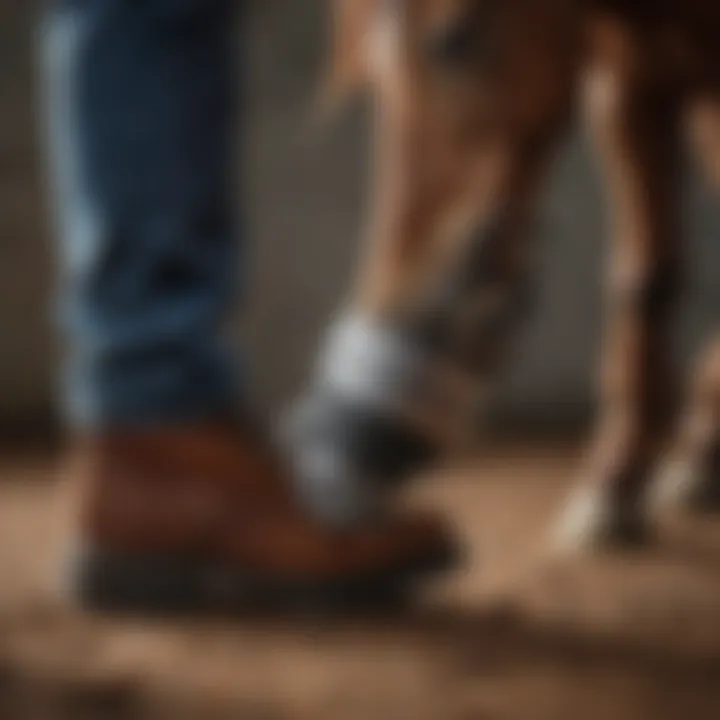
“Investing in quality electric hoof trimmers is crucial for ensuring safe and effective hoof care.”
Maintenance of Electric Hoof Trimmers
Proper maintenance of electric hoof trimmers is vital to ensure their efficiency and longevity. Like any tool, electric hoof trimmers require regular upkeep to function effectively. Neglecting maintenance can result in poor performance, increased wear and tear, and potential safety hazards. This section outlines essential practices for maintaining electric hoof trimmers to enhance their durability and operational efficiency.
Cleaning and Upkeep Best Practices
Keeping the trimmer clean is the first step in maintenance. Dirt, debris, and hoof material can accumulate on the trimmer's body and blades. This buildup can affect performance and lead to corrosion. Here are some best practices for cleaning:
- Inspect After Use: After each trimming session, check the trimmer for any visible debris. Removing debris promptly prevents buildup.
- Use a Soft Brush: A soft brush can effectively remove dirt from the surface. Pay special attention to the blades and the area around the motor.
- Disinfect the Blades: Use an equine-safe disinfectant to clean the blades. This reduces the risk of transferring infections between horses.
- When Not in Use: Store the trimmer in a dry, dust-free place. Keeping it in a protective case can also prevent potential damage.
Implementing these simple cleaning practices will significantly improve the overall condition of the hoof trimmer, allowing it to work efficiently for a longer time.
Blade Maintenance and Replacement
The blades of electric hoof trimmers are critical to their performance. Well-maintained blades ensure precision in trimming and contribute to the overall safety of the trimming process. Regularly checking and replacing blades is crucial. Here are key points for blade maintenance:
- Regular Sharpening: Dull blades can cause uneven cuts, which may harm the horse's hoof. Sharpen the blades regularly to maintain their cutting efficiency.
- Check for Damage: Inspect blades for any cracks or deformities. Damaged blades should be replaced immediately to avoid accidents during trimming.
- Replacement Schedule: Create a maintenance schedule that includes blade replacement at regular intervals, depending on the frequency of use.
Keeping blades sharp and in good condition is essential for effective and safe trimming.
Proper Usage Techniques
Understanding the proper usage techniques for electric horse hoof trimmers is crucial for ensuring both the safety of the horse and the user, as well as achieving optimal trimming results. Effective use of these tools not only enhances the trim quality but also influences the efficiency of the process. Here, we discuss two vital aspects: holding and handling the trimmer and positioning the horse for safe trimming.
Holding and Handling the Trimmer
Proper grip and handling of electric hoof trimmers are essential to promote control and reduce the risk of accidents. When holding the trimmer, grasp the handle firmly but not too tight. A loose grip can lead to loss of control, while a tight grip may cause fatigue over time.
Consider the weight and balance of the trimmer. This will help in maintaining a steady hand during the trimming process. Ensure that the blade of the trimmer is always facing downwards for maximum safety.
Before starting to trim, it is advisable to familiarize yourself with the specific controls of your model. Adjust the settings according to the hoof condition you are working on. For example, using a higher speed setting may be more efficient for soft hooves than for hard ones.
Positioning the Horse for Safe Trimming
The positioning of the horse is crucial when using electric hoof trimmers. A calm and secure setup not only makes the process smoother but also minimizes the risk of injury to both horse and handler. Begin by ensuring the horse is standing on a non-slip surface. This will prevent any sudden movements during trimming.
Next, approach the horse from a position where they can see you. This will help in keeping the horse calm. Securely tie the horse to prevent unnecessary movement. Using cross ties can be helpful in maintaining a stable position.
When lifting the hoof, use a soothing voice to encourage the horse. Position your body so you are not in direct line with the hoof in case of sudden movement. Support the hoof at the heel to provide stability while trimming.
"Proper positioning of the horse not only supports effective trimming but also safeguards against potential accidents."
Consider working from the side, as this allows better access to all areas of the hoof while keeping you at a safe angle. Always monitor the horse’s behavior; adjust your approach if the horse appears anxious or restless.
In summary, mastering proper usage techniques is essential for maximizing the benefits of electric hoof trimmers. Maintaining control through effective handling and ensuring a safe environment for the horse contributes significantly to successful outcomes in hoof care.
Common Challenges and Solutions
Electric horse hoof trimmers offer various benefits, yet they come with their own set of challenges. Understanding these challenges is essential for both new and experienced equestrians. Successfully addressing these issues can lead to more efficient trimming processes and better outcomes for horse health.
Dealing with Nervous Horses
Nervous horses can present a significant challenge during hoof trimming sessions. Their anxiety may cause them to move unpredictably, making it harder to use electric trimmers safely and effectively. It's quite important to create a calm environment before starting the trimming process. Some strategies to help include:
- Familiarization: Allow the horse to become acquainted with the trimmer by turning it on away from them before beginning. This helps to desensitize them to the sound.
- Calming Techniques: Using soft voices or gentle touch can soothe the horse. Sometimes offering treats can distract and relax the horse as well.
- Professional Assistance: If a horse is excessively anxious, it may be wise to enlist the help of a professional trainer or an experienced farrier.
Having a good understanding of how to manage a nervous horse during trimming is crucial. When they are calm, trimming becomes safer for both the horse and the handler.

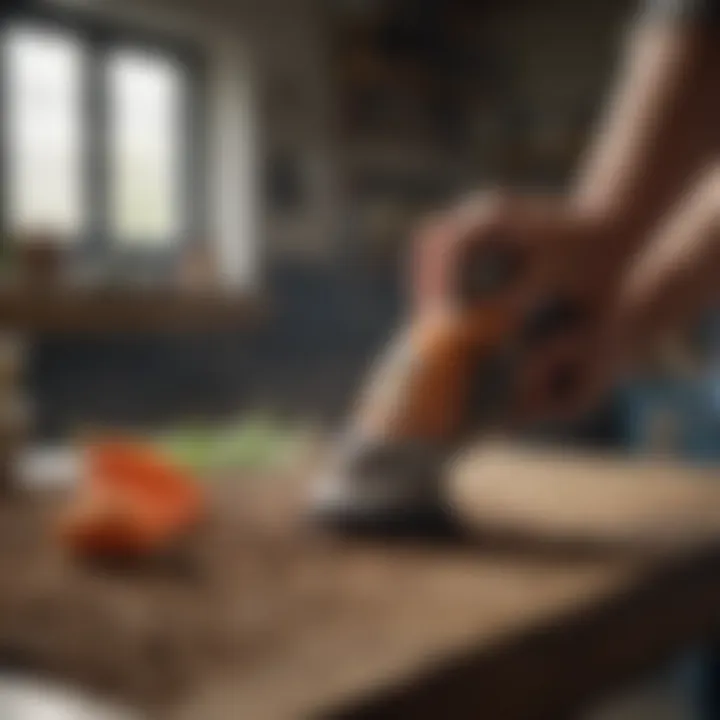
Handling Difficult Hoof Structures
Hoof structures can vary widely between horses. In certain cases, owners may encounter horses with unique issues, such as laminitis or uneven hoof growth. These factors can complicate trimming and impact overall hoof health. Here are some considerations:
- Assessing the Hoof Structure: Take time to evaluate the hoof before trimming. Understanding the specific needs of the hoof can help in deciding the right approach.
- Blade Selection: Choose trimming blades suitable for the specific condition of the hoof. Specialized blades can effectively manage different structural challenges.
- Consulting Professionals: For horses with complicated hoof issues, it may be beneficial to consult a veterinarian or hoof care specialist. They can offer tailored advice or treatment plans.
Economic Considerations
In the world of equine care, particularly regarding hoof maintenance, economic considerations are crucial. Electric horse hoof trimmers may have a higher initial cost compared to traditional trimming tools, but understanding the long-term financial implications offers significant insights. This section evaluates the economic factors that influence the decision to invest in electric hoof trimmers and how these factors affect overall equine management.
Initial Investment Analysis
When contemplating the purchase of electric hoof trimmers, the upfront cost is often the first consideration for buyers. Prices can vary significantly depending on brand, model, and features. For instance, professional-grade trimmers can range from $200 to over $1,000. Factors affecting price include motor power, battery longevity (for cordless models), and additional accessories such as blades or storage cases.
Investors must analyze not only the price but also the quality and reliability of the equipment. A cost-benefit assessment can help potential buyers understand the value of investing in a high-quality product.
- Warranty Considerations: Ensuring the manufacturer offers a good warranty can mitigate risks associated with the initial investment.
- Brand Reputation: Well-known brands may demand a higher price but often provide better durability and service support.
Cost-Effectiveness Over Time
Electric hoof trimmers can prove to be cost-effective in the long run, particularly for those managing multiple horses or operating a grooming business. Several aspects contribute to this perspective:
- Efficiency Gains: Electric trimmers are generally faster than traditional tools, saving time during routine hoof care. This time saved may allow professionals to service more clients per day, possibly increasing revenue.
- Reduced Labor Costs: For stables employing multiple staff members or where owners frequently trim hooves, the efficiency of electric trimmers can reduce the need for additional labor or the hiring of specialists.
- Long-term Savings on Consumables: Although electric trimmers require maintenance and replacement parts, they often reduce the necessity for multiple manual tools, thus leading to savings on consumable items such as hoof knives and files over time.
In summary, while the initial investment might be significant, the subsequent savings in time and labor can contribute to a stronger financial standing in equine management.
Case Studies and Success Stories
Case studies and success stories play a crucial role in understanding the practical benefits of electric horse hoof trimmers. They provide real-world examples of how these tools have improved hoof care practices in various settings. Through such narratives, stakeholders can observe the direct impact of modern technology on traditional methods, leading to better equine health and welfare. Moreover, these accounts illuminate the challenges faced and solutions discovered, showcasing the learning journey within the equestrian community.
Stables That Benefited from Electric Trimmers
Numerous stables have reported marked improvements in their hoof care routines since adopting electric trimmers. One notable case is Green Valley Stables, which transitioned from manual trimming to electric models. The stable's owner, Sarah, noted a significant decrease in time spent on hoof care tasks, allowing her team to focus on other essential stable duties. The efficiency gains were substantial; trimming that used to take hours can now be accomplished in a fraction of the time. Additionally, Sarah mentioned reduced stress for both staff and horses. The noise and vibrations from electric trimmers, while initially a concern, proved less alarming than anticipated. The horses adapted quickly, which improved the overall trimming experience.
The success stories are not just limited to individual stables. Larger ranches, such as Maple Acres, also benefited from electric hoof trimmers. The ranch manages numerous horses, and keeping up with their hoof care was a daunting task. Since implementing electric trimmers, the staff has reported fewer injuries during trimming, largely due to the improved precision and control offered by these devices. Regular hoof care has resulted in healthier hooves, which translates to fewer veterinary visits—ultimately saving money and increasing productivity.
Veterinarians' Perspectives on Efficiency
Veterinarians also recognize the efficiency of electric hoof trimmers as game-changing. Dr. Emily, a practicing veterinarian for over ten years, emphasizes that quicker and safer trimming contributes positively to horse welfare. In her experience, electric trimmers allow for more consistent trimming results, which is vital for maintaining hoof health. The precise nature of these tools helps prevent over-trimming, which can lead to pain or deformity.
In her practice, Dr. Emily often recommends electric trimmers to clients as an investment in their horses' long-term welfare. She explains that when hoof care routines become efficient, the horses enjoy better mobility and overall well-being. Many veterinarians share Dr. Emily’s views. They note that the time saved during hoof trimming can be redirected towards other important health checks, enhancing the overall equine care process.
"Electric trimmers have revolutionized how we approach hoof care. The benefits are clear; efficiency, safety, and improved horse health are undeniable." — Dr. Emily, veterinarian
In summary, the experiences from various stables and insights from veterinarians advocate for the adoption of electric hoof trimmers. The stories of efficiency, improved workflows, and better equine welfare resonate strongly within the equestrian community. Embracing these modern tools leads not only to enhanced hoof care but also to a holistic improvement in the management of horse health.
Finale and Future Trends
The examination of electric horse hoof trimmers leads to an important understanding of their role in equine care. As technology develops, embracing these tools can change how hoof care is conducted. Electric hoof trimmers provide significant advantages over traditional methods, particularly in achieving precision and efficiency. Looking ahead, the integration of advancements can enhance the experience for the user and well-being for the horses. This makes it essential to highlight what innovations may come and the continued focus on animal welfare.
Innovations on the Horizon
The future of electric hoof trimmers holds promising developments. Here are some aspects to consider:
- Smart Technology: Incorporating sensors and connectivity can allow for real-time monitoring. This data can help in understanding hoof health better and predicting needs.
- Battery Efficiency: Battery life is crucial for cordless models. Future innovations may lead to longer-lasting batteries that charge faster, improving usability.
- Customizable Settings: More advanced models might offer customizable speed and pressure settings. This can accommodate different hoof types and conditions, ensuring safer trimming.
- Lightweight Materials: Future trimmers may utilize advanced materials for lighter designs, reducing user fatigue during prolonged use.
These innovations not only aid in efficiency but also contribute to the safety and comfort of both the horse and the handler.
Continued Importance of Equine Welfare
Equine welfare remains paramount in any discussion surrounding hoof care practices. Here are important considerations that support this notion:
- Positive Experience: Ensuring a non-stressful experience during hoof trimming sessions promotes better behavior from horses, encouraging cooperation and reducing injury risk.
- Health Monitoring: Regular trimming is vital for hoof health, thus technology that enhances trimming efficiency also contributes to better overall horse health.
- Sustainability Practices: Future tools should align with sustainability principles. Utilizing eco-friendly materials and production methods will reflect a commitment to animal welfare and the environment.
Electric hoof trimmers significantly influence both efficiency and equine welfare. As advancements occur, maintaining a focus on how these changes benefit horses is essential to achieving the highest standards of care.



